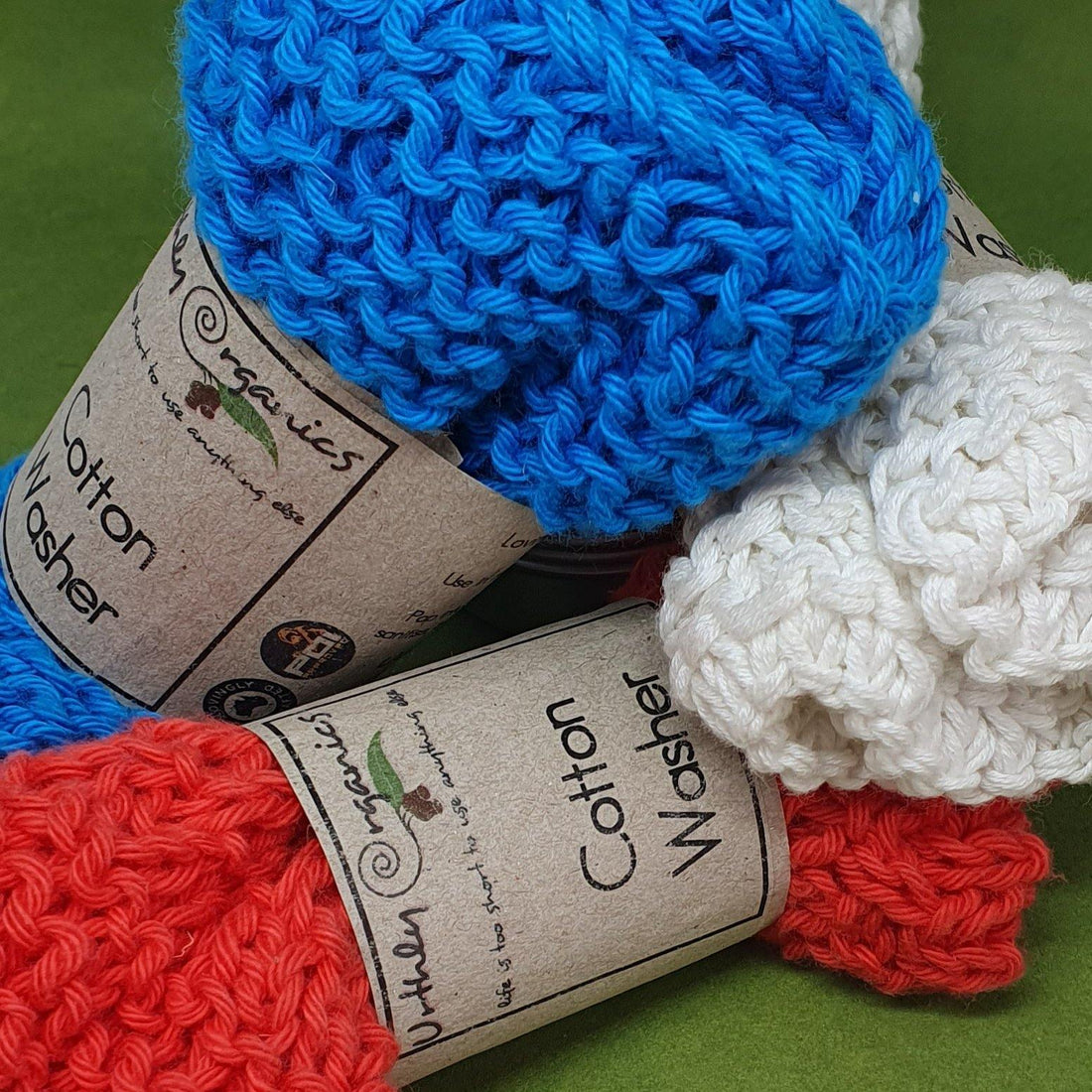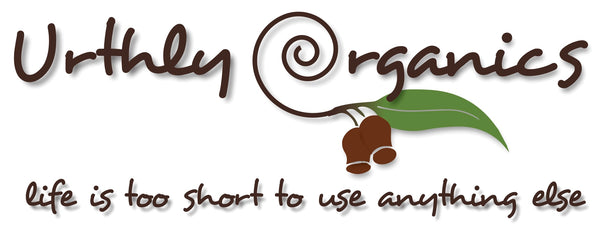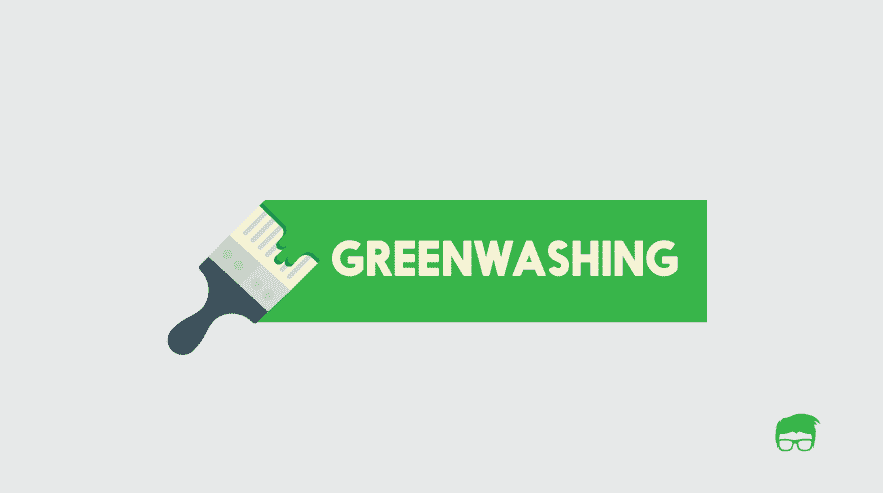
5 Ways to Be an Eco-Friendly Consumer: Textiles
Share
This is an ongoing series we hope to deliver at Urthly Organics as part of our Products with Purpose blog.
With the rise in consumer awareness of their social and environmental impact, companies must look to evolving their products to be as sustainable as possible. However, many businesses have instead begun to greenwash their products and customers.
‘Greenwashing’ [1] refers to the insincere and superficial display of concern towards environmental issues by organisations such as labelling items that take years to break down as; biodegradable, sustainable palm oil and its derivatives, third party animal testing, and not paying workers a fair wage for manufacturing eco-friendly products [2]. The use of branding can mislead the public into purchasing unethically.
How do we know what we are buying is aligned to our values? The answer is not straight forward. Ideally, everyone would be a ‘conscious consumer’, whereby individuals base their purchase decisions on the transparency and shared values of a company. However, for some people and situations, this is not always possible in every situation. This is where companies need to assist in providing the opportunity to buy ethical.
At Urthly Organics we believe that it’s important for consumers to hold a critical lens to what we are being sold. Here are some of the things we should look for when making the conscious decision to purchase a product, ingredient, or service.
Look in your wardrobe. How clean do you think it is? Look in your linen cupboard. How ethical are your sheets? Look at the textiles you have. Where did they come from?
Fashion is an extremely consumptive industry. Second to oil, the clothing and textile industry is the largest cause of pollutions in the world[3]. Between 2000 and 2014, clothing production doubled across the world, with consumers buying 60 percent more pieces on average than they did 15 years prior[4]. The consumption of clothing now has a fast turnaround, with the clothing being kept for half the time compared to previous years (fast fashion). Fast fashion means that the emissions, pollution, and waste cause devasting impacts on the environment. Furthermore, the treatment of workers can be (more often than not) exploitive too. In the Ethical Fashion Report (2019)[5] by Baptist World Aid Australia, found that while there is an increase in selected retailers improving working conditions and impacts of their brand, only 61% have are addressing gender inequality in supply chains, 45% have policies aimed at improving working conditions, 35% have robust policies that aim to redress child and forced labour, and 35% ensure that their workers are not exposed to hazardous substances without safety measures in place.
By now, you’re probably wondering how this at all relates to Urthly Organics. As part of our product range, we sell some textiles, in producing these products, we must be aware of how our values are expressed. Our cloth range must focus on ethics as much as any other business.
To help you be cautious when purchasing, we like to do the following:
Ask questions and analyse the range when buying new:
Sometimes retailers may advertise that they have a sustainable option, but it’s amongst brands/fabrics/garments that don’t commit to the same practises[6]. You can contact businesses to ask about the practises they buy and why an option is more ‘ethical’ than another. Also, critically analyse the response and don’t be scared to dive deeper and ask questions. In environmentally friendly clothing stores, you will generally find that the business will be more transparent in what makes their products ‘ethical’.Mend, up-cycle, and re-purpose:
Clothes and textiles are ultimately pieces of fabric that can be changed. Wear and tear can be mended to continue in many cases, with all that’s needed being a button or some stitches. Ultimately, if the fabric is looking a little worse for wear, think about how you can give it new life[7]. Maybe it's turning an old t-shirt into a pillow cover? Or old socks into heat packs? Or making some cleaning rags? The possibilities are endless.
Shop second-hand:
Opportunity shops are an adventure. Troves of clothing, fabrics and cloth. Other times, you are laughing about why someone thought that a design was a good idea or worth wearing? Ultimately shopping second-hand allows you to find pieces you’d never found otherwise, with long-wearing vintage textile gems hidden too. Together, you can alter/create/ and have a new wardrobe at a reduced cost and greater benefit to the environment (because you are not buying new and are keeping clothes out of the landfill). And if you have textiles or clothing that are perfectly useable, consider passing them on too. This way, someone else gets the joy of choosing second-hand[8].
Recycle:
Clothes and textiles can be recycled, with some textiles being compostable. Contact your local council for options on where to recycle certain clothing, bedding and fabrics, as areas do differ[9]. By doing this, you save your clothing from sitting in a landfill, slowly breaking down and creating emissions.
Think before you purchase:
like grocery shopping, make a list of what you need, including bedding, fabrics, clothing, etc. Retailers know how to grab our attention and create impulse buying, and sometimes we need to take a step back to think whether we need what we 'want'[10]. Ask yourself, is it on the list? Will it be used a lot? What is the alternative? Does the product provide a solution to our other values?. Even if you need to walk around for 10 minutes to see how you still feel about it. By taking yourself away from an impulse buy, you will have placed meaning for a purchase.

The values we express in the mentioned approaches are mirrored in our transparency towards our products. This includes our textiles:
No Planet B Cleaning Cloths:
- Hand-sewn in Bendigo, Victoria.
- Linen Long-wearing, compostable and printed in Melbourne[11]. The fabric is considered more sustainable as it breaks down, the plant can be used in many ways to reduce wastage, and linen uses less pesticides to grow.
- Repurposed cotton towel fabric on the other side: The back is cut from towels to create two multipurpose sides. At the end of its life, the cotton side can be recycled or composted.
- Made to last: the cleaning cloths can be mended and altered if necessary. However, they have been made for long term wear and tear. We don’t want you to have to buy a new cloth from us every few months. We want you to chuck this cloth in the wash and have it re-used again, and again, and again, when its finally worn out, compost it or bury it in the garden.
- Provides you with an alternative to plastic and limited-use or once only use cleaning wipes.
Cotton washers and pouches:
- Cotton Pouches: Handmade locally in Bendigo, Victoria with yarn from the Bendigo Woollen Mills.
- Cotton Washers: Handmade by our packaging artist.
- The thread is compostable at the end of its life.
- Built for purpose: these products are not a fashion trend, so we make sure that they fulfill the purposes of cleaning, carrying or draining.
- Provides you with an alternative to mass-produced textiles, and plastic soap drainers/holders.
Bath urchins:
- Handmade by Knotting Naked, a lovely lady in Brisbane, Queensland[12].
- Made using hemp, the product is sustainable and compostable. *Note: hemp does not contain THC, the compound in the drug cannabis (we get asked!).
- The bath urchins are multipurpose, acting as an exfoliator, scrubber, or soap saver. This reduces the need for synthetic, plastic or non-compostable fabrics in bathing.
We hope this allows you all to consider what you buy into in the future. We also hope to continue these posts to suggest ways to combat greenwashing and unsustainable practices in the future.
References
[1] Kenton, W., via Investopedia (2020), ‘Greenwashing’: https://www.investopedia.com/terms/g/greenwashing.asp
[2] Green & Thistle (2020), ‘What is Greenwashing? Examples [2020]’: https://greenandthistle.com/what-is-greenwashing/
[3] EDGE, ‘Fashion Industry Waste Statistics’: https://edgexpo.com/fashion-industry-waste-statistics/
[4] Ibid
[5] Baptist World Aid Australia (2019), ‘The 2019 Ethical Fashion Report: THE TRUTH BEHIND THE BARCODE’: https://www.business-humanrights.org/sites/default/files/documents/FashionReport_2019_9-April-19-FINAL.pdf
[6] Selflessly Styled(2017), ‘How to tell if a brand is ethical or not’: http://www.selflesslystyled.com/blog/how-to-tell-if-a-brand-is-ethical-or-not
[7] Atkinson, A., via Lifehack, ‘27 Creative Ways To Reuse Old Clothing’: https://www.lifehack.org/453113/27-creative-ways-to-reuse-old-clothing
[8] Wood, F., via Stride (2020), ‘7 Ways To Be More Green’: https://www.stridestore.com.au/blogs/news/7-ways-to-be-more-green
[9] Planet Ark, ’Clothing’: https://recyclingnearyou.com.au/clothing/
[10] Ramsey, D., via Ramsey Solutions, ‘Impulse Buying: Why We Do It and How to Stop’: https://www.daveramsey.com/blog/stop-impulse-buys
[11] The Spotted Quoll (2017), ’The bare truth about Linen...is it sustainable?’: https://thespottedquoll.com.au/blogs/news/the-bare-truth-about-linen-is-it-sustainable#:~:text=The%20Pros%20of%20Linen,dyed)%20it%20is%20fully%20biodegradable.
[12] Etsy, ‘Knotting Naked’: https://madeit.com.au/Main/Store?storeId=23890&userId=137570&showPolicies=true


